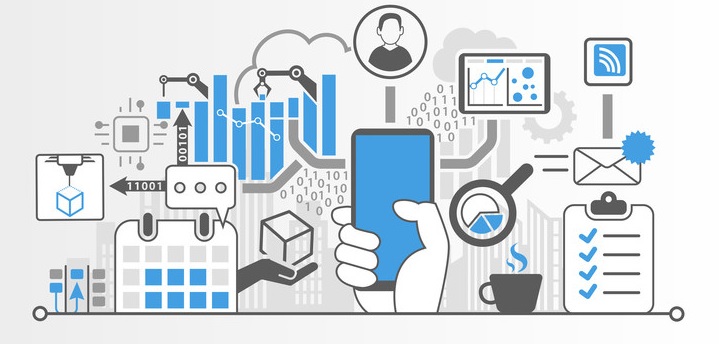Smart Manufacturing and MRP: Two Sides Of The Same Coin

Running a small manufacturing business has its challenges. Implementing smart manufacturing practices will go a long way in solving some of the more significant problems. However, to remain competitive over the long term, you have to continuously change with the times.
Continuous improvement is not easy, and it’s here that most small manufacturers fall by the wayside. It’s not all bad news though. Read the rest of the article to find out why MRP and Smart Manufacturing will keep you competitive.
What is Smart Manufacturing?
Whatever line of business you’re in, be it aerospace, medical, food & beverage, construction materials, or pharmaceutical; getting your product to the customer on time is vital to business success. Running a manufacturing company is just like any other type of business. You have a manufacturing process that turns inputs into finished goods.
Smart manufacturing is the concept of using advanced tools to manage the flow of raw materials, the manufacturing process, and fulfillment of inventory on time. It aims to optimise the manufacturing process through big data analysis and computer controls.
It achieves this through the use of advanced information analysis and manufacturing technologies, such as sensors and RFID tags for example. It utilises artificial intelligence (AI), and provides a competitive advantage in the pursuit of satisfying the increasing demands of a dynamically changing global market.
Introducing you to Manufacturing Requirements Planning (MRP)
On its own, smart manufacturing is a powerful concept. Married to MRP, however, you have a winning combination that can take your manufacturing business to the next level. MRP is a system to control planning, inventory, scheduling, and production within a factory environment.
With the data from an MRP software, you can order raw materials, schedule a production plan, clear warehouse space and release finished goods on time.
Working with demand forecasts, you can use this data to plan how much raw material you need to purchase. With smart manufacturing and MRP, you can break down the master production schedule into a detailed program including every component of the finished product. Armed with a complete schedule, you can proceed to order necessary raw materials or parts.
How can MRP Benefit you and your Business?
Getting products to the customer on time is the goal of every business. There are several standard goals for most companies when it comes to MRP. Such goals include ensuring adequate inventory is in place, that purchase orders are scheduled correctly, that a plan exists for raw material delivery, and that manufacturing processes are lean.
If you regularly find yourself running out of inventory or experiencing long waiting times for components to manufacture, you need MRP.
Here are some of the benefits you will enjoy with an MRP system:
- You can reduce or eliminate instances of raw material or component shortages.
- You can reduce the amount of stored inventory to levels that ensure you are meeting your orders on time.
- You will enjoy more accurate scheduling which will leads to increased customer satisfaction, since delivery times are met.
- Your improved scheduling will increase productivity and efficiency.
- You will experience an overall increase in competitiveness.
- You will have the potential to ultimately boost your profitability.
Steps to implementing MRP in Your Business
Adopting MRP may mean a change to the way your business process currently works. Making changes to your process is something you have to prepare for and have a plan for before going ahead with it.
For MRP to be a success, your accounting and billing processes should be as accurate as possible. To quote a common saying: “Garbage In, Garbage Out”. While MRP has massive potential, it relies heavily on the data points it receives. These data points include customer orders, inventory levels, demand forecasts, and details for raw materials or components (bills of materials).
MRP will track the levels of these inputs and perform calculations based on them. The outputs of the calculations are reports which will guide how you plan a production run, how much raw materials to order, and when you expect finished products to be ready for delivery.
You can find more tips here on implementing MRP in your business.
Final Thoughts
A good MRP system will boost the effectiveness of your manufacturing business, making your operations much leaner and more profitable. However, it’s very dependent on the inputs it receives so it’s important when researching an MRP system that you choose a reputable platform, with great user support.
The beauty of smart manufacturing, when linked to your MRP system, is that it will be able to learn and work autonomously, independent from humans. With such an advanced system in place, manufacturing firms of all sizes can elevate their success rates to higher levels, and provide tough competition to their counterparts.



